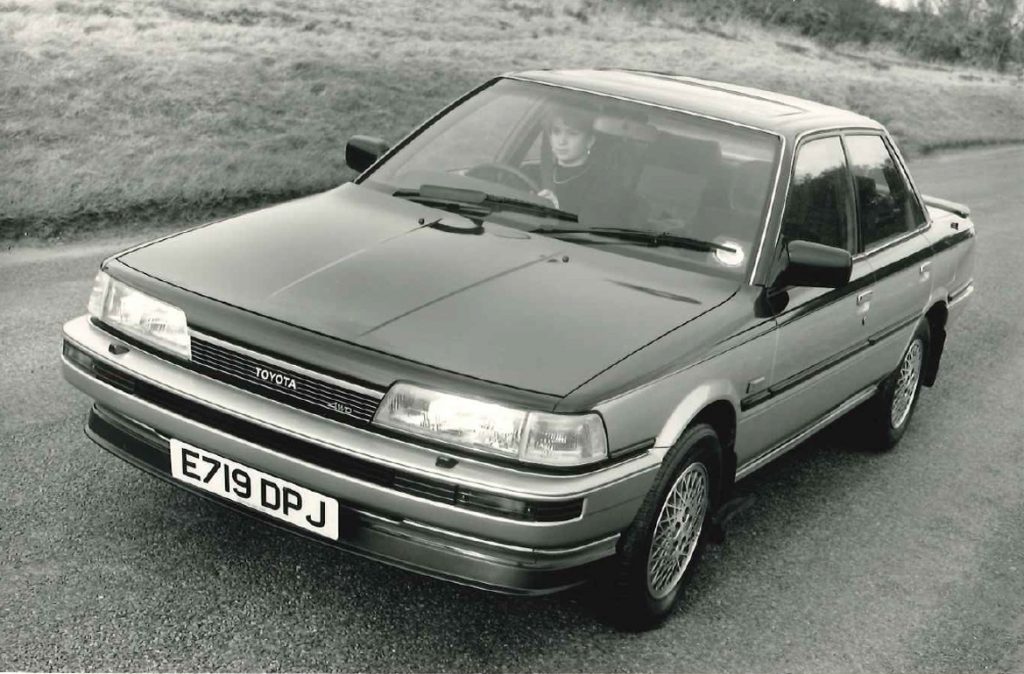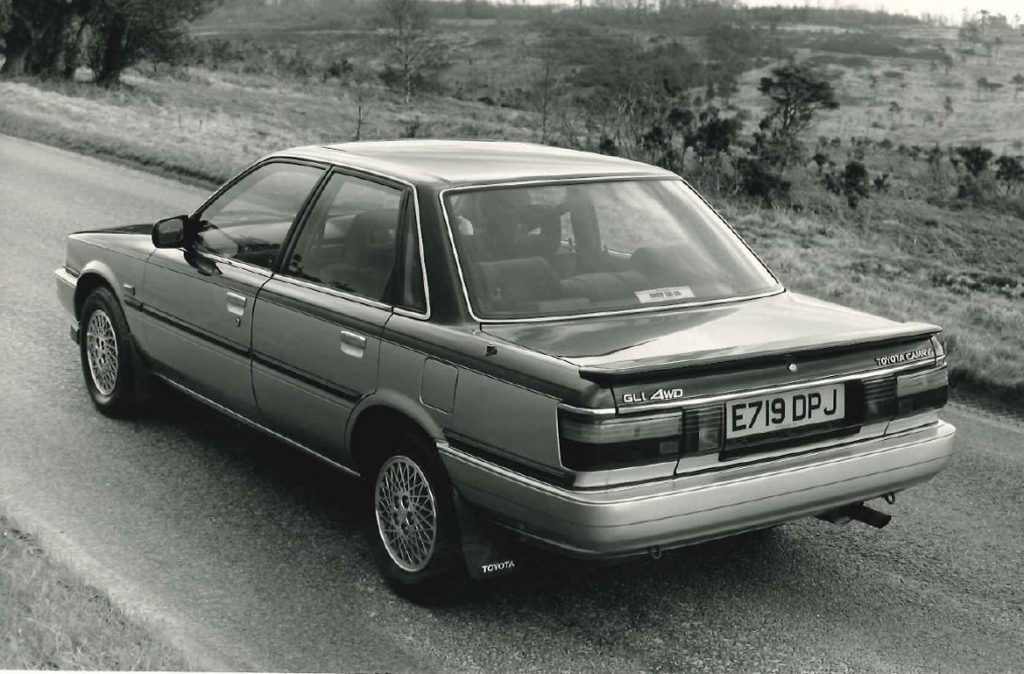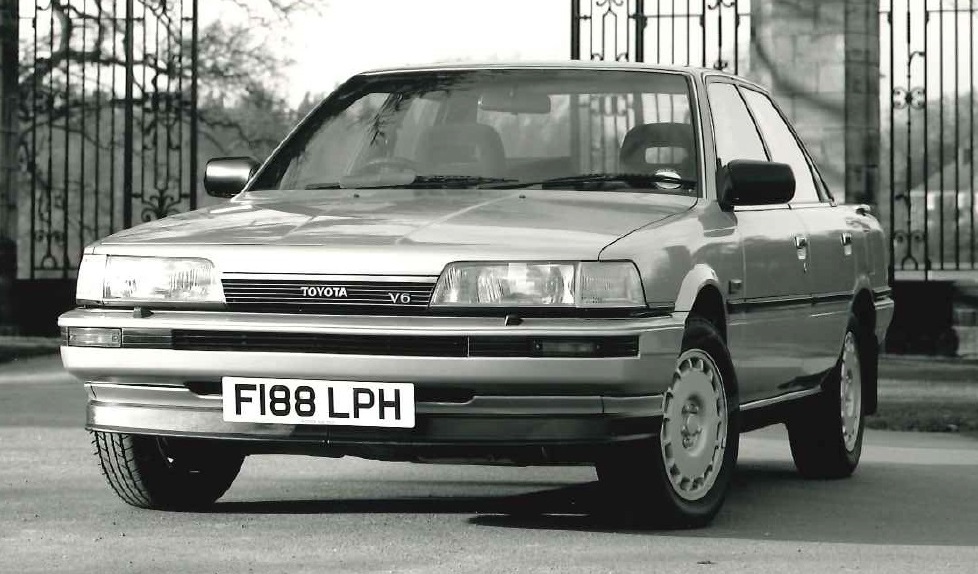It’s strangely ironic that Toyota replaced the Camry with the Avensis, a car quickly acknowledged as one of the most boring cars ever produced. Naturally it became a top pick for taxi drivers, not only for its inevitable reliability but that its overwhelming blandness drew more attention to the taxi companies’ names glowing on top.
Before it was ruined with Toyota’s European Tastes Committee, the Camry stood proudly, if blandly, upon some excellent engineering while its passengers sat ensconced in extravagant masses of velour, at least in the ‘Executive’ versions. Like many at the time, it borrowed from its sports car siblings in the 1980s, such as fitting twin cam engines from the Celica and MR-2, albeit retuned to suit.
Forgotten, however, among the lasting marketing flair of Audi’s Quattro and Ford’s XR4x4, there was the 1988 Toyota Camry ‘4wd’. Its cause was unlikely to be helped by an asking price equivalent to £40k of today’s money. However, this did buy the mysteriously discerning gentleman some special equipment, and not just the 4wd system borrowed from the rally-developed Celica GT4 – wait, why wasn’t it the Camry GT4 then? Oh, Toyota. The engineering was there, but the rest was very much muted.

The suspension specification really does read like a toned down rally car, with larger anti-roll bars, unique spring and damper rates, a rear track narrower by 10mm, and proper structural reinforcements particularly to support the rear axle and differential. Even better, it’s a 50/50 front/rear split drive system with a central automatic locking viscous-coupling differential, not some sappy part-time affair. Together with Camry’s top-class handling, a fact that at the time was often glossed over with mocking yawns, this must have resulted in truly masterful cross-country performance, although with unaltered ground clearance (170mm), best kept on tarmac. It could be all brought to a stop quite confidently, too, with the standard front twin-piston vented 255mm discs and rear discs, upgraded from drums on 2wd models, of oddly large 269mm diameter. Reassuring, then, for a car that weighed a rather un-rally-car-like 1455kg.
Unfortunately, Audi was in its era of one-step-ahead smugness, and the 90 Quattro was one of many examples of its beating competitors to the punch. Toyota was simply too late to the party and not dressed up enough for anyone to notice. It’s four-wheel-boring’s 126bhp was outgunned by Audi’s 2nd generation of Quattro models, not to mention Vauxhall’s brilliant 16 valver in the GSI Cavalier 4×4, and the then new Subaru Legacy was also stepping into the ring – there was even a turbo version of that one.

Naturally time changes everything. Thirty years on and petty competition over 50bhp fades into insignificance. What matters is the sweetness of Toyota’s finely tuned twin cam, the coolness in the subtlety of that 4wd badging, spindly alloy wheels that scream turning-1990, and restrained Japanese styling cleanly defined in two-tone paint. Add to that rally car specification (nearly) and what comes up is a car I wish they hadn’t made so few of.
Having been made for only a short time, and even Toyota only aspired to fewer than 500 a year, apparently there’s now only one left on the road in the UK, so I suppose the only option is to desecrate a classic Celica GT4 along with adopting its turbo engine. Then it’ll show those Audi Quattros what for. Alternatively and more considerately, simply keep an eye out and a parking space free in your memory for the forlorn Japanese 4wd saloon. It’s much more interesting than it had credit for.

If you enjoyed this article, why not check out some others?
– and stay tuned for more in the Unexpected Features series
Remember to follow me on Facebook and Instagram too
Photography courtesy of Toyota UK
